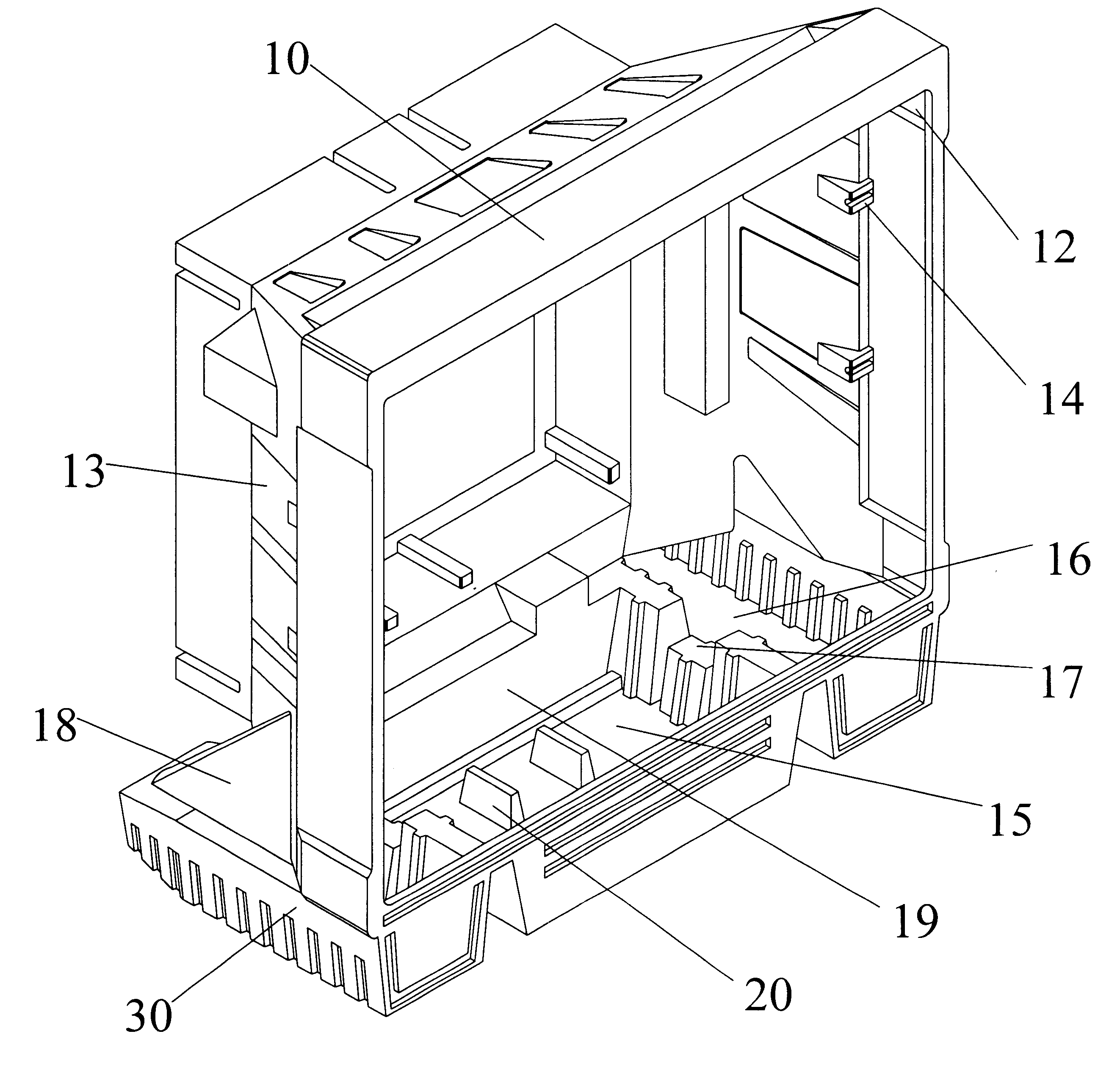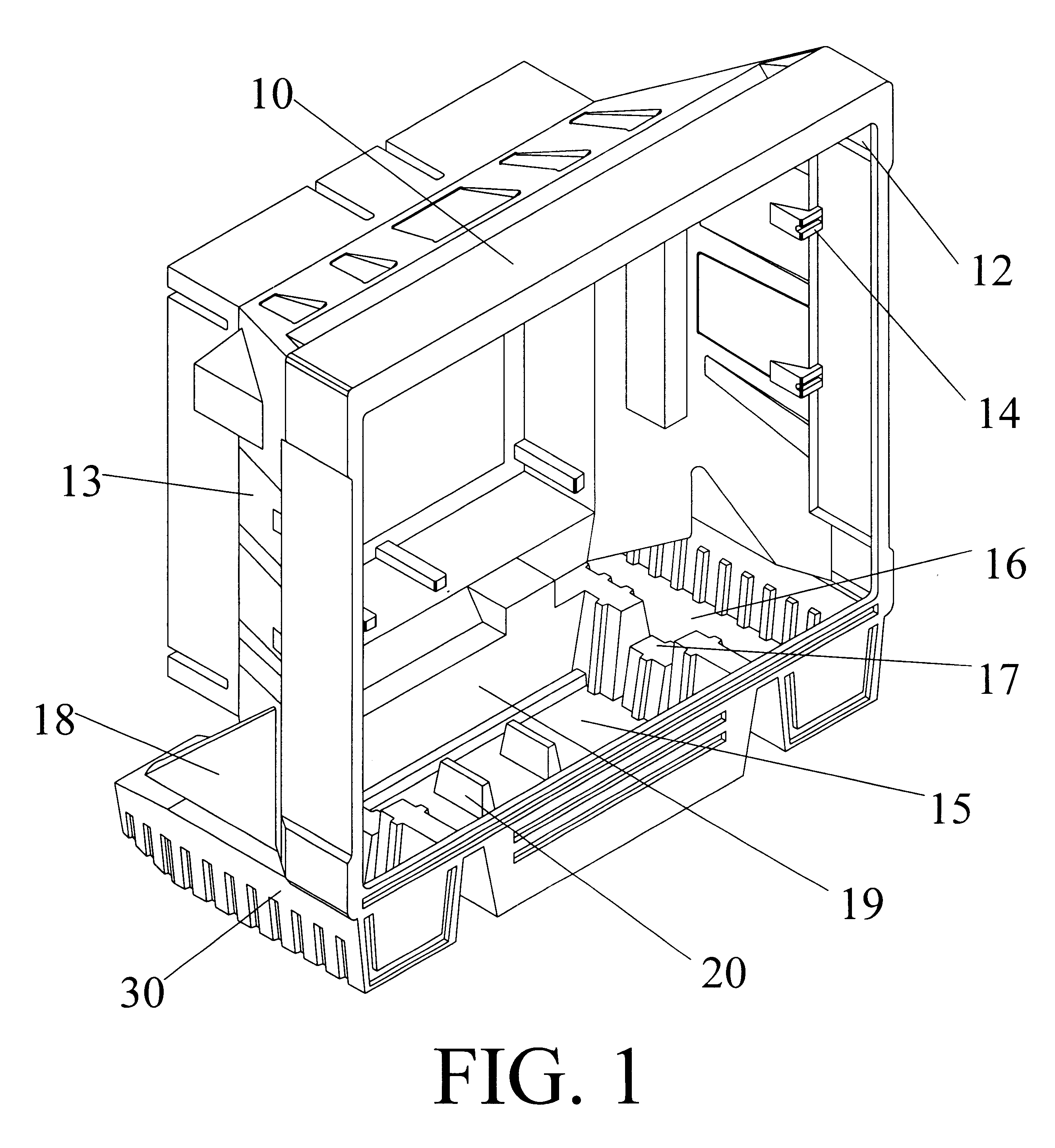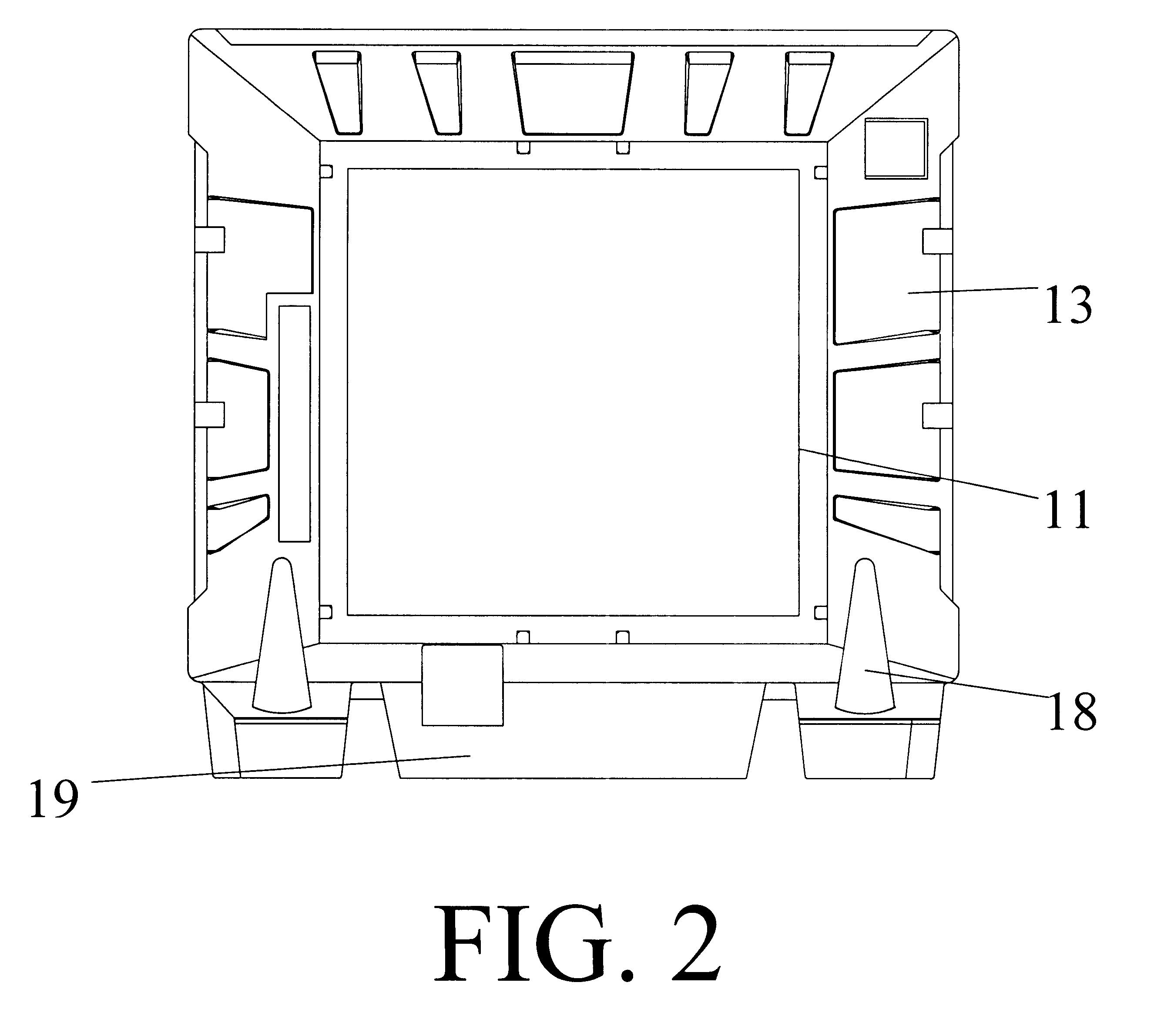Cooler housing apparatus and method of making the same
a technology of cooler housing and cooling housing, which is applied in the direction of lighting and heating apparatus, indirect heat exchangers, and stationary conduit assemblies, etc., can solve the problems of prior art creating danger, damage to the surface of the cooler housing, and the deficiencies of sophisticated examples of cooler housings, so as to increase the volume of water, reduce the chance of another object striking the assembly and damaging it, and increase the stability of the housing
- Summary
- Abstract
- Description
- Claims
- Application Information
AI Technical Summary
Benefits of technology
Problems solved by technology
Method used
Image
Examples
Embodiment Construction
As depicted in FIGS. 1-4, the present invention comprises housing 10, having front opening 11 and rear opening 12, that may be used for encasing, protecting, and supporting components integral in providing air movement and / or relief from the heat. Though the preferred embodiment envisions the use of housing 10 as an integral part of the portable evaporative cooler, housing 10 can provide support and protection for the components of nearly any cooler.
Housing 10 may be formed out of metal, plastic, composites, organic fibers including wood, or any other substance capable of being formed, molded, or otherwise shaped to include at least one aspect of the invention. Housing 10 is preferably formed by rotation molding or resin transfer process.
Referring to FIG. 1, housing 10 comprises a variety of features. Of particular interest, housing 10 comprises at least one recess 13 capable of strengthening housing 10 and offering a prime location for the placement and protection of plumbing assem...
PUM
 Login to View More
Login to View More Abstract
Description
Claims
Application Information
 Login to View More
Login to View More - R&D
- Intellectual Property
- Life Sciences
- Materials
- Tech Scout
- Unparalleled Data Quality
- Higher Quality Content
- 60% Fewer Hallucinations
Browse by: Latest US Patents, China's latest patents, Technical Efficacy Thesaurus, Application Domain, Technology Topic, Popular Technical Reports.
© 2025 PatSnap. All rights reserved.Legal|Privacy policy|Modern Slavery Act Transparency Statement|Sitemap|About US| Contact US: help@patsnap.com



